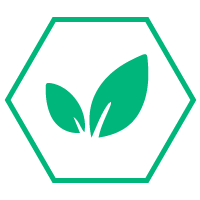How to Read a Supplement Label: A Clear Guide for Beginners
How to Read a Supplement Label – A
Beginner’s Guide
Understanding how to read a supplement label is essential before adding any product to your daily routine. Whether you're new to health supplements or just want to make informed choices, knowing what the label says can help you choose the right product, avoid unwanted ingredients, and ensure you're getting real value for your money.
In this guide, we’ll break down each part of a supplement label in a clear and simple way.

1. Product Name and Supplement Type
At the top of the label, you’ll find the product name and what type of supplement it is—such as “Multivitamin for Women,” “Vitamin D3 5000 IU,” or “Biotin for Hair Support.”
This section should clearly indicate the purpose of the product. If it sounds too vague or uses only marketing terms like “Ultimate Wellness Formula” without any clear nutrient names, it might be a red flag.
2. Serving Size and Servings per Container
Look for the section that shows:
-
Serving Size – the recommended amount to take at one time (e.g., 1 capsule, 2 scoops).
-
Servings Per Container – how many servings the entire bottle contains.
This helps you estimate how long the supplement will last and whether it offers good value.
3. Supplement Facts Panel
This is the most important part of the label. It lists:
Nutrients and Ingredients
Each vitamin, mineral, or active ingredient is listed here along with its:
-
Amount per serving
-
% Daily Value (%DV) – This shows how much the nutrient contributes to your daily requirement based on a 2,000-calorie diet.
If the %DV is over 100%, it means the product contains more than the minimum daily requirement. This is common for nutrients like Vitamin C or B12, but you should always consult a healthcare provider for high-dose supplements.
4. Other Ingredients
This section is usually found below the main nutrients and includes things like:
-
Gelatin or plant-based capsule materials
-
Binders and fillers
-
Sweeteners or flavoring agents (in powders or gummies)
If you have allergies or dietary restrictions (e.g., gluten-free, vegan), make sure to review this part carefully.
5. Suggested Use or Directions
Most labels include a “Suggested Use” section. It tells you:
-
How many pills, scoops, or drops to take
-
How often to take them (daily, with meals, etc.)
Follow this guidance unless a healthcare professional advises otherwise.
6. Warnings and Cautions
This part provides safety details like:
-
Not suitable for pregnant or nursing women
-
Keep out of reach of children
-
Avoid combining with certain medications
Even if you're healthy, never ignore this section. Some supplements can interfere with medications or medical conditions.
7. Expiry Date and Lot Number
Always check the expiration date to make sure the product is safe and effective.
The lot number is a traceable code manufacturers use in case of recalls or quality checks.
8. Certifications and Quality Seals
Look for trusted symbols like:
-
GMP (Good Manufacturing Practice) Certified
-
Third-party tested
-
Non-GMO
-
Vegan or Gluten-Free seals
These give extra confidence in the product’s quality and safety.
9. Manufacturer Information
A trustworthy brand will always include:
-
Company name and address
-
Customer support or website for more details
Avoid products that hide this information or seem difficult to trace.
Conclusion: Choose Smart, Stay Safe
Learning how to read a supplement label empowers you to make informed, healthy decisions. Always take the time to study the ingredients, dosage, and safety notes. Choose products from reputable brands, and consult your healthcare provider when in doubt.
A label is more than just branding—it’s your first line of defense for safe and effective supplementation.
